Categories
- Wire & Cable
- Multi-conductor & Signal Cable
- Battery Cable Assemblies
- Terminals and Connectors
- Electrical Parts
- Electrical Tools
- ID Products
- Wire Management
- Tape & Sealant
- Mounting Panels & Panel Blanks
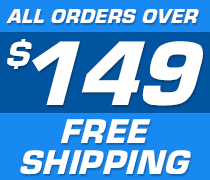
Need Help?
Click HereGet a Business Account
Apply HereEnclosures and Boxes

What are enclosures?

Enclosures are cabinet type boxes that are designed to protect electrical equipment and prevent shock to operators. Each one is built with safety and environmental protection in mind. This means that enclosures are perfect for electrical components in the toughest marine conditions. Enclosures offer protection from wind, dust, chemicals, water, and more. In fact, they are fully waterproof and have continuous gaskets that are made from polyurethane foam. This foam seal is added to guarantee optimal integrity. The bottom line is that enclosures are the best way to protect sensitive electrical equipment while increasing overall safety. One question we often get is about the difference between enclosures and junction boxes.
"The bottom line is that enclosures are the best way best to protect sensitive electrical equipment while increasing the overall safety."
Where are enclosures and junction boxes implemented?
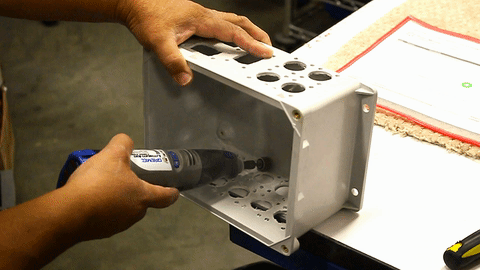
Enclosures are ideal for containing sensitive pieces of equipment.
Enclosures and junction boxes are implemented in applications where sensitive equipment or connection points need a higher level of protection. You will commonly find them in engine rooms and electrical rooms. All Pacer enclosures, as well as junction boxes, are perfect for new installs as well as when replacing equipment on your boat. If you have burnt enclosures or damaged enclosures, then these are the ideal parts to finish your project. All you will need is the proper size aluminum mounting plate. Now that we have covered where enclosures are implemented, let us shift our focus to the difference between an enclosure and a junction box.
What is the difference between an enclosure and a junction box?
Although there are many differences between enclosures and junction boxes, the biggest one is size. Junction boxes are generally smaller like 5”x5” while enclosures can get fairly large. The largest enclosure that we offer is around 18”x16”. Also, enclosures offer different style covers such as screw cover, hinge with screw cover, and hinge with latch cover. Another important difference is that junction boxes are available in translucent covers so you can easily see inside the box. You can still get opaque covers if you would rather have those. With all this in mind, it is time to select the correct enclosure for your application.
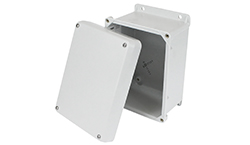
Enclosures
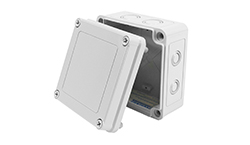
Junction Boxes
How do I select the correct enclosure?
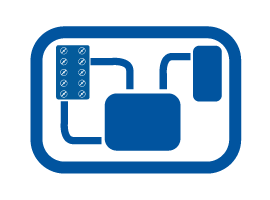
The most important aspect to consider when selecting an enclosure is the size of your application. Once you know the size of your space and the components to go in the enclosure, it’s a simple step to select the right one. Suppose all of your components can easily fit into an 8”x8” space and your installation space is about 12”x10”, then the 10”x8” enclosure is the ideal solution. It will give you enough space both inside and outside to have a little bit of wiggle room. The last thing you want to have is everything packed in there so tightly that it creates stress on connectors or terminals. One thing to be confident about when selecting your enclosure is the safety features that they carry.
What safety features do these enclosures offer?
Due to the environmentally sealed nature of these enclosures, they help to prevent the spread of fire if one happens to start inside of the enclosure. That is about as safe as you can hope for. By reducing the risk of fire spreading, enclosures serve a vital secondary function that, in the end, can save lives. This just goes to show how durable and high quality these enclosures actually are. One thing people often ask about is whether or not enclosures are built to handle the marine environment.

Are enclosures built to handle the marine environment?
Enclosures and junction boxes are built to handle the toughest marine conditions out there. With protection from things like dust, wind, water, chemicals, and temperature, enclosures and junction boxes are built to be durable. Speaking of temperature, enclosures are built to withstand continuous temperatures up to 150°C making them for use in the hottest engine rooms.





Where would I use an aluminum mounting plate?
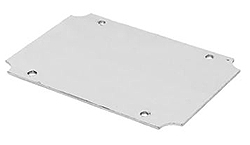
Aluminum mounting pates are designed to make installing an enclosure or junction box a simpler task. Sometimes you may not have a durable surface to mount to and that is where an aluminum mounting plate is an ideal solution. Being designed for durability and longevity our mounting plates are built to handle environments where corrosion may be a factor. Each aluminum mounting plate is custom built and is simple to install. When selecting the proper mounting plate for your application make sure that you look at the spec sheet on this page to find the corresponding plate. For quick access to the spec sheet, click here.
*This page was updated on 03/31/2022*


